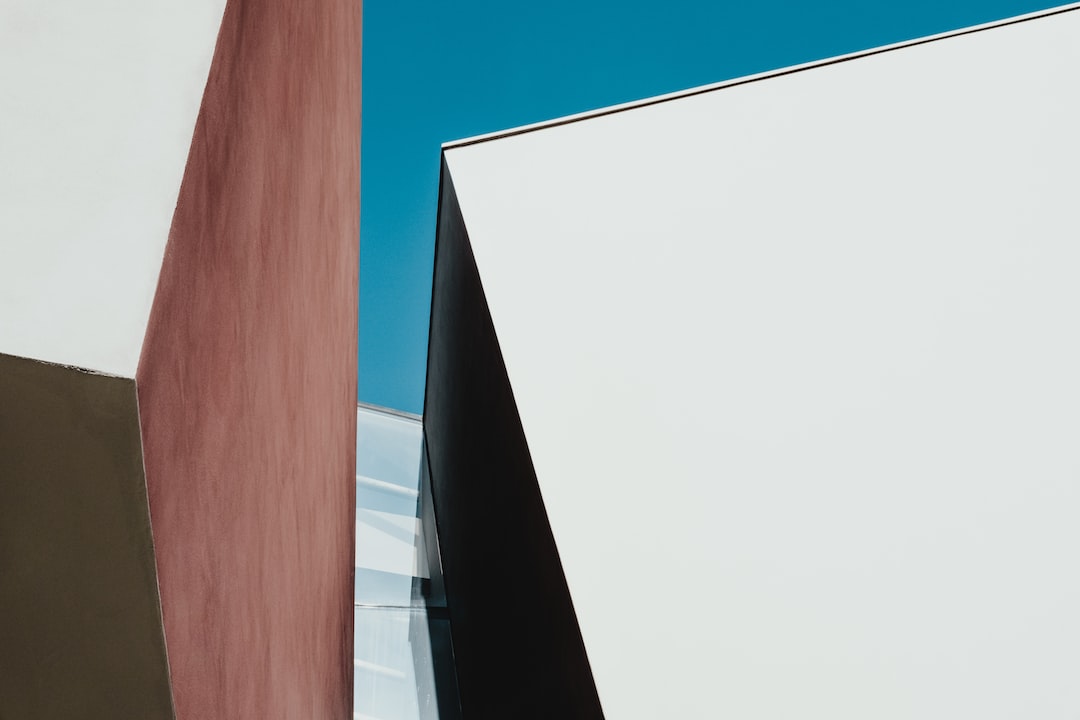
Industrial style is a popular trend in interior design that draws inspiration from the raw and unfinished look of industrial spaces such as factories and warehouses. It is characterized by the use of raw and unfinished materials, exposed pipes and ductwork, minimalist design, and a neutral color palette. Industrial style has gained popularity in recent years due to its unique and edgy aesthetic, as well as its ability to create a sense of authenticity and history in a space.
The History of Industrial Style
The origins of industrial style can be traced back to the late 19th century when factories and warehouses started to be converted into residential spaces. These spaces often retained their original industrial features such as exposed brick walls, concrete floors, and large windows. The industrial aesthetic was further popularized in the 1970s when artists and designers started repurposing old industrial buildings into studios and lofts.
Over time, industrial style has evolved to incorporate elements from other design styles such as rustic, vintage, and modern. Today, it is not uncommon to see industrial-style elements in a variety of spaces including homes, offices, restaurants, and retail stores. The appeal of industrial style lies in its ability to create a unique and visually interesting space that is both functional and aesthetically pleasing.
The Characteristics of Industrial Style
One of the key characteristics of industrial style is the use of raw and unfinished materials. This includes materials such as exposed brick walls, concrete floors, metal beams, and reclaimed wood. These materials not only add texture and visual interest to a space but also create a sense of authenticity and history.
Another characteristic of industrial style is the presence of exposed pipes and ductwork. Instead of hiding these elements behind walls or ceilings, they are left exposed to showcase the building’s infrastructure. This not only adds an industrial touch to the space but also creates a sense of openness and transparency.
Minimalist design is also a key characteristic of industrial style. Furniture and decor are kept to a minimum, with a focus on functionality and simplicity. Clean lines and geometric shapes are often used to create a sense of order and balance in the space.
Lastly, industrial style is known for its neutral color palette. Shades of gray, black, brown, and white are commonly used to create a clean and cohesive look. These colors also help to highlight the raw and unfinished materials used in industrial-style spaces.
Incorporating Industrial Style Elements into Your Home
When incorporating industrial style elements into your home, it is important to choose the right space. Industrial style works best in open and spacious areas such as lofts or converted warehouses. However, it can also be adapted to smaller spaces such as apartments or condos.
Mixing industrial style with other design styles can also create a unique and personalized look. For example, combining industrial elements with rustic or vintage pieces can add warmth and character to a space. On the other hand, mixing industrial elements with modern or minimalist pieces can create a sleek and contemporary look.
If you’re feeling creative, there are also plenty of DIY industrial style projects that you can try. For example, you can make your own industrial-style shelves using reclaimed wood and metal pipes, or create a statement light fixture using vintage bulbs and metal cages. These projects not only add a personal touch to your space but also allow you to customize the design to suit your taste.
Industrial Style Lighting
Industrial style lighting is an important element in creating an authentic industrial look. There are several types of industrial style lighting that you can incorporate into your home, including pendant lights, chandeliers, wall sconces, and floor lamps.
To incorporate industrial style lighting into your home, consider using fixtures made from materials such as metal, glass, or concrete. Look for fixtures with exposed bulbs or wire cages for an added industrial touch. You can also experiment with different shapes and sizes to create a visually interesting look.
If you’re feeling adventurous, there are also plenty of DIY industrial style lighting projects that you can try. For example, you can make your own pendant lights using metal pipes and vintage bulbs, or create a unique chandelier using reclaimed materials. These projects not only add a personal touch to your space but also allow you to customize the design to suit your taste.
Industrial Style Furniture

Industrial style furniture is another important element in creating an authentic industrial look. There are several types of industrial style furniture that you can incorporate into your home, including metal chairs and stools, reclaimed wood tables, and leather sofas.
To incorporate industrial style furniture into your home, look for pieces with clean lines and simple designs. Avoid furniture with ornate details or excessive upholstery, as these can detract from the industrial aesthetic. Instead, opt for pieces that showcase the raw and unfinished materials used in industrial-style spaces.
If you’re on a budget or looking for a unique piece, there are also plenty of DIY industrial style furniture projects that you can try. For example, you can make your own coffee table using reclaimed wood and metal legs, or create a statement bookshelf using metal pipes and wooden planks. These projects not only add a personal touch to your space but also allow you to customize the design to suit your taste.
Industrial Style Textures and Materials
Textures and materials play a crucial role in creating an authentic industrial look. There are several common textures and materials used in industrial-style spaces, including exposed brick walls, concrete floors, metal beams, and reclaimed wood.
To incorporate industrial style textures and materials into your home, consider exposing existing brick walls or installing faux brick wallpaper for an instant industrial touch. You can also opt for concrete floors or use concrete tiles to create an industrial look. Metal beams can be left exposed or painted in a contrasting color to create a focal point in the space. Finally, reclaimed wood can be used for flooring, furniture, or accent walls to add warmth and character to a space.
If you’re feeling creative, there are also plenty of DIY industrial style texture and material projects that you can try. For example, you can create an accent wall using reclaimed wood planks, or make your own concrete countertops using a concrete mix and a mold. These projects not only add a personal touch to your space but also allow you to customize the design to suit your taste.
Industrial Style Color Palettes
Color palettes play a crucial role in creating an authentic industrial look. There are several common color palettes used in industrial-style spaces, including shades of gray, black, brown, and white.
To incorporate industrial style color palettes into your home, consider painting walls in shades of gray or white for a clean and cohesive look. You can also use black accents or furniture to create contrast and add drama to the space. Brown tones can be introduced through the use of reclaimed wood or leather furniture for a warm and inviting feel.
If you’re feeling creative, there are also plenty of DIY industrial style color palette projects that you can try. For example, you can paint furniture or accent pieces in a bold color such as red or yellow to create a focal point in the space. These projects not only add a personal touch to your space but also allow you to customize the design to suit your taste.
Industrial Style Accessories and Decor
Accessories and decor play a crucial role in adding the finishing touches to an industrial-style space. There are several types of industrial style accessories and decor that you can incorporate into your home, including vintage signs, metal wall art, exposed bulbs, and wire baskets.
To incorporate industrial style accessories and decor into your home, consider adding vintage signs or metal wall art to create a focal point in the space. Exposed bulbs can be used to create a statement light fixture or hung in clusters for a dramatic effect. Wire baskets can be used for storage or as decorative accents on shelves or walls.
If you’re feeling creative, there are also plenty of DIY industrial style accessories and decor projects that you can try. For example, you can make your own vintage signs using stencils and paint, or create a unique wall art piece using metal scraps and reclaimed materials. These projects not only add a personal touch to your space but also allow you to customize the design to suit your taste.
Creating a Cohesive Industrial Style Interior Design
When designing with industrial style, it is important to create a cohesive look that flows throughout the space. Here are some tips for creating a cohesive industrial style interior design:
1. Start with a neutral color palette: Use shades of gray, black, brown, and white as the base colors for your space. This will create a clean and cohesive look that allows the industrial elements to shine.
2. Choose the right materials: Use raw and unfinished materials such as exposed brick walls, concrete floors, metal beams, and reclaimed wood to create an authentic industrial look.
3. Keep it minimal: Stick to minimalist furniture and decor to create a sense of order and balance in the space. Avoid clutter and excessive ornamentation.
4. Mix and match: Experiment with different textures, materials, and styles to create a unique and personalized look. Mix industrial elements with rustic, vintage, or modern pieces for added interest.
5. Pay attention to lighting: Use industrial-style lighting fixtures to create a focal point in the space. Consider using exposed bulbs or wire cages for an added industrial touch.
While designing with industrial style, it is important to avoid some common mistakes. One common mistake is overdoing it with industrial elements. It is important to strike a balance between industrial elements and other design styles to create a cohesive look. Another common mistake is neglecting functionality. While industrial style is known for its aesthetic appeal, it is important to ensure that the space is functional and practical for everyday use.
In conclusion, industrial style is a popular trend in interior design that draws inspiration from the raw and unfinished look of industrial spaces. It is characterized by the use of raw and unfinished materials, exposed pipes and ductwork, minimalist design, and a neutral color palette. Industrial style has gained popularity in recent years due to its unique and edgy aesthetic, as well as its ability to create a sense of authenticity and history in a space. By incorporating industrial style elements such as lighting, furniture, textures and materials, color palettes, and accessories and decor into your home, you can create a cohesive industrial style interior design that is both visually interesting and functional.
